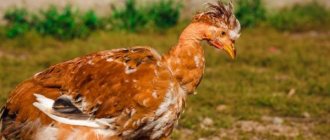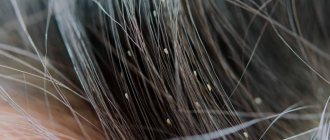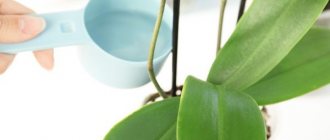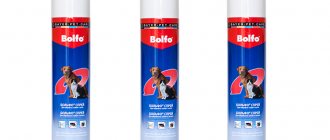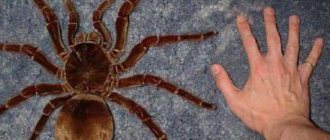Pets have a variety of parasites, both external and internal. But if fleas are on everyone's lips, then lice are considered an exclusively human problem. Lice, or pediculosis, occurs in kindergartens and summer camps. A child can catch an infection by using, for example, someone else’s comb.
However, both cats and dogs can also be parasitized by these annoying insects. The good news is that lice are strictly species-specific parasites. This means that cat louse cannot live on a person or dog, and human louse is not dangerous for pets.
Do dogs have lice?
Dogs and cats can become infected with lice, although these parasites are not usually diagnosed in pets. They are more common in stray animals that live in their natural environment. When in contact with street animals, older dogs and puppies are more at risk of infection due to weak immunity. Poor nutrition and poor general health increase this likelihood.
Lice are found on fur. They are the size of a sesame seed and yellowish-brown in color. They live on and around hair shafts. They feed on skin cells, dandruff and secretions from the skin glands. They can also be found around wound surfaces or openings on the body.
Important! Although humans cannot get dog lice, remove and wash clothing immediately after washing or treating your furry pal. Because lice live for 3 days without a host and during this time they will return to the dog by transfer from clothing.
Symptoms and routes of infection
Many people wonder whether dogs have lice, knowing only about such a problem as fleas. It is quite easy to identify lice in dogs, as they are a cause of concern for your pet:
- itching occurs, as a result of which the animal often scratches;
- Dermatitis and scratching are noted on the skin;
- the presence of the problem also affects the psychological state of the dog, because during parasitism the dog does not sleep and is in a depressed state;
- The pet's fur becomes dull and becomes tangled.
Lice in dogs Experiencing constant itching, the dog tries to scratch itself on surrounding objects.
As a result, the skin becomes covered with abrasions, scratches and becomes inflamed. With a large concentration of parasitic individuals, other symptoms may be observed: an allergic reaction, anemia and exhaustion. In puppies, such a reaction can be observed at the initial stage. As a result, dogs develop eczema, neurodermatitis or dermatitis. Lice in dogs can be detected by examination; white grains are attached to the fur, that is, parasite eggs; adult lice are also observed. Lice and lice are localized in dogs in the area where the hair gets tangled, as well as on the tips of the ears. Dogs can act as a carrier, in which case the only symptom will be seborrhea.
Infection of an animal occurs as a result of contact with an already infected dog - this is the main method. Also, a household route is not excluded, that is, due to the pet’s contact with objects. Often, lice eggs are brought into the house by the owner on shoes or clothes. If the mother is infected, then the puppies acquire this problem immediately after their birth.
On a note!
Parasites most often appear during the cold season, although infection can occur during other periods. Among the provoking factors are the pet’s poor nutrition, poor hygiene, and the conditions in which the dog lives. Older animals are most susceptible to infection.
Types of dog lice
Animal lice are divided into 2 categories: blood-sucking and chewing. The chewing Trichodectes canis and Heterodoxus spiniger live on dogs.
H. spiniger is found mainly in tropical regions. Therefore, they are unlikely to infect your pet in Russia. Trichodectes canis is found throughout the world. This type of lice lives on the head and neck. It has a blunt, flat head due to the large mandibles with which the insect chews food.
Among the blood-sucking species of dogs, only Linognathus setosus is affected. They live in cool climates. They have sharper heads and mouths adapted for sucking blood or liquids. Suckers always have more developed claws for grasping hair than chewers. They settle on the neck, where the skin is more delicate, in the area under the collar. They prefer to live on dogs of long-haired breeds.
All lice can cause skin irritation and parasitic itching. The pet scratches or bites the affected area. If left untreated, the dog's hair will begin to fall out.
Important! Trichodectes canis carries tapeworms.
What danger do parasites pose?
More often, Yorkies are susceptible to flea attacks during walks in the spring and summer. An insect bite can cause an allergic reaction in your dog, which is accompanied by redness, swelling and severe itching. Scratching the affected area leads to the appearance of ulcers, which may subsequently even fester. Yorkshire Terrier
Many breeders often wonder if Yorkies have fleas. After all, their fur has a special structure that is close to human hair. Therefore, it is reasonable to assume that this breed is likely to be infested with lice.
Lice lead a sedentary lifestyle. They prefer to live immediately in the thickness of the owner’s hair. Lice quietly migrate and move around. The insect has the ability to jump high. Most often, indoor Yorkies are attacked by fleas, which must be taken into account when choosing a control method.
The danger of infection lies in the ability of fleas to carry various diseases. The most dangerous of them are cucumber tapeworm and helminthiasis. Parasites can also carry salmonellosis, plague, and brucellosis.
How can a dog become infected?
A dog can become infected with parasites:
- from another infected dog;
- in places where there are large concentrations of animals;
- using grooming tools - eggs from the fur of a dog that was groomed before your pet may remain on the combs.
Are they transmitted to humans?
Lice are species specific. This means that there are different types of lice for each animal species. Human lice require human blood. Otherwise they won't survive. And the dogs are in the dog's room. Therefore, they do not live on other living things and cannot be passed from person to dog, and you cannot get them from your pet.
Measures to prevent lice
To prevent your pet from getting sick, it is necessary to follow preventive measures:
- Animal contact with stray dogs should not be allowed. This will help protect him not only from lice, fleas and worms, but also from something like rabies.
- The dog (especially in the cold season, oddly enough) must always wear an anti-parasitic collar. If this method is not suitable for some reason, it is treated with antiparasitic drops once a month.
- Your pet must be brought in for a routine veterinary examination at least once a quarter.
- If there are also cats in the house, then if the dog becomes ill, it is best to treat the dog, since some individuals of lice may well escape on the skin of cats and from there again “emigrate” to the dog.
- At exhibitions, under no circumstances should you use shared grooming items, bedding, etc.
Signs of lice
Signs of lice:
- itching;
- skin redness;
- peeling;
- tousled or matted fur;
- oily skin.
If you notice any of the symptoms, examine the animal’s fur. Lice are very small and almost translucent. Therefore, it is difficult to notice them. But the nits—their eggs—are clearly visible. They attach to the hair very firmly. They look like transparent granular scales up to a millimeter long. Adult lice also hang on hair, but they can move, unlike nits.
Find out in more detail what dogs can get sick with: infectious, parasitic and other diseases.
Rules for using funds
In addition to direct treatment of the dog’s skin and fur, a sanitary inspection of the animal’s feeding and resting place should be carried out. To do this, the kennel, beds, and bedding must be thoroughly washed, treated with a solution of pyrethroid drugs, dried and ironed. Place hygiene items in water and boil for at least 10 minutes.
The products are used for treatment and prevention, suitable for small breeds of dogs and puppies.
When applying the lice preparation, be sure to use rubber gloves. Before use, read the instructions, paying special attention to the “Contraindications” section. Since all products containing insecticides are flammable, do not smoke while using them. It is advisable to wear a protective mask or respirator on your face. If there are other dogs living in the house, then the sick individual must be isolated until complete recovery.
How to treat head lice at home
Getting rid of lice is easy.
There are numerous:
- shampoos;
- sprays;
- powders;
- drops;
- anti-parasite collars.
Most flea medications are also labeled as effective against lice. They all help get rid of parasites equally well. Therefore, you can simply choose the product that you like. But always pay attention to the duration of action of the chosen product.
Adult females live for about 4 weeks and lay up to 10 eggs daily. in a day. Nits hatch in 1–2 weeks. The nymph lives on the skin and becomes an adult within 2–3 weeks. Initial treatment kills adult lice. But nits are not susceptible to insecticides and will remain on the pet. To cope with those pests that appear from eggs, you need to carry out up to 3 treatments with an interval of 10-14 days.
Preventive treatment is carried out once every 1–3 months. The animal treated with the drug must be placed on a clean bedding. Affected animals must be quarantined. They should not be allowed to interact with other dogs or share utensils or grooming supplies. Be sure to wash all your dog's accessories and disinfect the floor.
Lice can only live without a host for 3–7 days. Therefore, if you don’t want to wash it, pack the bedding in a sealed bag for 6 weeks (so that not only the adult parasites have time to die, but also those that hatch from the eggs). This is guaranteed to get rid of the problem.
Important! Dogs that have been infested with lice need to add iron, vitamins and minerals to their diet to improve blood composition and red blood cell production.
Shampoo
Please note that most large companies produce not just one type of anti-parasite product, but a line. This is done in order to cover all categories of hosts.
Below are the leading brands:
- The Swiss brand Mr Bruno produces a wide range of products for pets. The line of medications for external parasites includes shampoo, drops, flea and tick spray, and a collar.
- Hartz is an American company that manufactures and sells products for dogs and cats. The line of flea and tick products also includes sprays, drops, shampoos, and collars.
The shampoo is effective in killing adult parasites. But it does not affect eggs and nymphs. Therefore, 3 treatments are needed with an interval of 1 week if you find lice or fleas.
Also pay attention to the active ingredients:
- If the product contains lime sulfate, it has a specific smell of rotten eggs. It is better to wash your pet with it indoors with access to fresh air, but it is better to do it outside. It is also not recommended for dogs with light coats, as the drug leaves dark spots on the skin.
- In the next group of shampoos, the active ingredients are pyretins. They are made from chrysanthemum flowers. Therefore, they smell better and are suitable for killing a wide range of insects. This same group of medicinal products is more widely represented on the market than others.
Safety precautions when working with flea and tick shampoos:
- Work must be performed with gloves.
- Do not use on puppies under 2 months of age.
- The drug should not come into contact with the pet’s eyes or mucous membranes.
Insecticidal shampoo Mr. Bruno is made with 0.5% permethrin. Used at the rate of 3 ml per 1 kg of pet weight. With one press, the dispenser dispenses 4 ml of liquid. The product is applied to damp hair, distributed evenly and washed off after 3 minutes.
Phytoelite shampoo also works on the basis of permethrin 0.3%. Used at the rate of 1 ml per 1 kg of dog weight. Apply to damp wool. Wash off after 3-5 minutes.
Did you know? Symptoms such as itching, skin irritation and scratching may occur in 50% of those infected, while the rest may not even know about it for some time.
Hartz UltraGuard Foaming Flea & Tick Shampoo is designed to control fleas, lice and ticks. It also cleans the wool and deodorizes it. It is recommended to brush your dog well before using shampoo.
Before shampooing your pet, check for lice. Prepare plenty of towels and warm water (+30°C). Do not heat it too much as the dog may overheat. Convenient to wash outdoors, but can be washed in the sink or in the bathroom.
Be sure to read the instructions on the package and do not exceed the indicated dosages. The reason is that shampoos may contain toxic substances.
Shampooing technique:
- Start by wetting the fur from neck to tail.
- Apply shampoo and lather thoroughly.
- Pay close attention to the armpits, the area behind the ears, under the tail, and around the hind legs.
- Wait 3 minutes.
- Start rinsing. Once your dog has shaken himself off, pat him dry with towels to reduce the amount of moisture on his fur.
Drops
Repellent drops Mr. Bruno is presented in 3 versions: for dogs of small, medium, large breeds. The drops contain natural oils with insecticidal properties. For example, oil of wormwood, neem, cloves, citronella. They need to be applied to the withers area once every 3 months, which is very convenient.
Drops from Hartz will be effective for 1 month, repelling fleas and other parasites from your pet. The drug should not be used on puppies under 1 year of age. Apply along the spine from the withers to the tail, trying to get it on the skin and not on the coat.
The drug should not come into contact with the eyes. But if this happens, you need to immediately start rinsing them. Do this carefully for several minutes (5-15 minutes).
Did you know? Lice have coexisted alongside humans for a very long time. Even in Egyptian tombs, mummies with signs of lice were discovered.
“Imidacloprid” is another drop on the withers. They work well against fleas and lice, but do not work against ticks. You need to treat your pet in the same way once a month.
"Selamectin" affects all groups of parasites and arthropods. Apply the medicine to dry skin between the shoulder blades. Apply monthly from the beginning of the warm season until the end of summer.
Technique for correct application of anti-flea drops:
- Find the space between your front shoulder blades and your neck.
- Lift the fur and apply to the skin by pressing the dropper bottle onto it.
- Wash your hands after using the product.
Spray
Insect-acaricidal spray Mr. Bruno works on the basis of fipronil and pyriproxyfen. A single application will provide protection against lice and fleas for 8 weeks, and protection against ticks for 4 weeks.
Hartz Ultra Guard Flea s Tick Spray for Dogs is a spray designed to protect your pet from fleas and ticks. The product creates a protective barrier around the hairs, thanks to specific phytoncides, which repels and destroys skin parasites. Apply from a distance of 15 cm. Use once a week. Valid for 7 days. This product can be used to treat puppies older than 3 months.
Did you know? Lice can hold their breath for up to 2 hours. Therefore, they cannot be washed off from your pet’s fur with regular washing.
Spray "Fipronil" destroys fleas, lice, ticks, lice, and ear scabies. Prescribed for cats and dogs. Sprayed from a distance of 10–20 cm. Dosage 3–6 mg per 1 kg of pet weight. You can wash the animal no earlier than 48 hours after spraying. It should be treated prophylactically once every 2–3 months (more often in summer).
Spray application technique:
- The spray must be sprayed from a distance of at least 15 cm.
- Since you cannot direct the stream onto your head, you need to apply the product to your gloved hand. And then treat the area behind the ears, the back of the head and other parts of the head with it so as not to touch the eyes or mucous membranes.
- Rub the spray in until the coat remains sufficiently damp.
Collar
Collar Mr. Bruno will protect the dog for 3 months. During all this time, the active substance (permethrin 10%) will be released gradually and will repel insects. It is equally effective against all skin parasites.
The Hartz Ultra Guard Flea s Tick Collar will last for 7 months. If, after it is dressed and activated, white dust appears on the fur, this means that the active substance has reacted. You don't need to do anything about it.
Do not use the collar after the expiration date, as... the product is released gradually and after 7 months it will become just a decorative decoration. Contraindications: Collars should not be worn on pregnant or lactating dogs. And for puppies under 7 months you need to buy a special collar.
Folk remedies
The most popular folk remedy is combing out lice. At the same time, dead hairs are removed, eggs (nits) are destroyed, and the skin is massaged. This technique has now been improved with the use of an electric comb. It affects the hairs with weak current discharges and destroys parasites.
The second method is washing with tar soap. This remedy was effective when the soap was really tar. Therefore, you should not use it now if you are not sure of its quality.
Did you know? Your dog's sense of smell is about 100,000 times better than yours.
Treatment
The treatment strategy is developing in the following directions:
- extermination of parasites and measures to protect against re-infection;
- symptomatic remedies to eliminate the consequences of invasion.
It is necessary to understand that products intended for large dogs may be toxic for decorative and small dogs. Insecticides used on adult animals are usually toxic to puppies. Therefore, before purchasing a medicine, you should carefully study the instructions for use.
The following means are used to exterminate parasites:
- Aqueous emulsions.
- Insecticidal powder.
- Ready-made aerosols.
Aqueous emulsions
Deltsid and Entomazan S are popular. The drugs are produced in bottles or ampoules and an emulsion is prepared before use. Work with rubber gloves and safety glasses. To prevent poisoning, take activated carbon or another sorbent. Working fluid is rubbed into the dog or treated with an improvised spray bottle.
Try not to get it in your eyes. Problem areas are treated with a finger dipped in the solution. Do not allow the pesticide to be licked off before it dries. For this purpose, the dog is muzzled for half an hour. In order not to inactivate the insecticide, the dog is not bathed 2 days before and 2 days after treatment.
Since the insecticide does not affect the eggs, you must wait 8–10 days until the larvae hatch and repeat the treatment. The working solution is suitable for use throughout the day. The drugs protect the dog from repeated attacks for no more than 2 weeks.
Insecticidal powder
The drug is used in cold weather, when it is undesirable to wet your pet. Powder is applied to the dog and combed against the grain. The following powders are popular:
- Bolfo;
- Insectal;
- Celandine.
The treatment is carried out outside so as not to stain the furnishings in the apartment.
Ready-made aerosols
The following aerosol insecticides are used:
- BlochNet;
- Bolfo;
- Fiprist;
- Frontline.
The application procedure is the same as for aqueous emulsions. However, sprays have significant advantages:
- long shelf life;
- prolonged validity, no need to process twice.
Symptomatic remedies to eliminate the consequences of invasion
The following tasks must be completed:
- relieve itching;
- stop the inflammatory process;
- cure anemia.
- restore skin health and coat beauty;
To relieve itching, use the drugs Stop Itching or Contravance. To stop the inflammatory process, anti-inflammatory wound healing agents Zooderm are used; Levomekol; Ranozol. To eliminate anemia, the injectable drug Hemobalance is most suitable. To restore the health of the skin and the beauty of the coat, for supporters of natural nutrition, the veterinarian will prescribe the multivitamin feed additive Laveta-super or its analogues.
For those who prefer professional nutrition, the following veterinary foods will help solve skin and coat problems:
- Purina DRM;
- Eukanuba Dermatosis FP;
- Hills d/d.
Differences between lice and fleas
Both fleas and lice are small parasitic insects that can live on your pet. The saliva of both can cause itching and irritation of the skin. But fleas can jump. These dark-colored insects do not live on the owner all the time. They hide in the folds of the litter and in cracks. And when they get hungry, they attack the dog. Having eaten, they jump off and hide in the cracks again.
Lice can't do that. These are white or pale yellow insects, smaller than fleas, that cannot jump. If they fall, they will die within 24 hours without access to a power source. Therefore, the legs of lice are equipped with special claws, with which they are firmly attached to the hair near the base and thus live their entire lives. Because of this feature, lice are much easier to exterminate than fleas.
Symptoms
Most often, the action of lice is consistent with lice eaters, and in the summer - with fleas. Hair-free areas appear and expand, and the following symptoms develop:
- depressed state;
- itching, skin rashes;
- nits appear at the roots of the hairs;
- insomnia;
- loss of appetite or refusal to eat;
- dandruff, which indicates moderate lice infestation;
- the dog reacts aggressively to touch;
- dermatitis occurs, crusts form, the pathology transforms into eczema or pyoderma;
- anemia occurs mainly in puppies due to parasites sucking out a significant amount of blood;
- the wool becomes matted and tangles form;
- subcutaneous Demodex and Sarcoptes mites are activated;
- exhaustion.
Preventive measures
Many owners do not even know whether cats have lice, because often these insects die during timely preventive measures, which include regular treatment of the pet with insecticidal preparations against fleas. Such remedies also act on the lice-eaters that live in the cat’s fur. The effect of the drug lasts several weeks, during which all the parasites manage to die, and the young individuals hatched from the eggs face the same fate as soon as they begin to feed.
